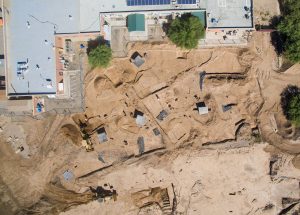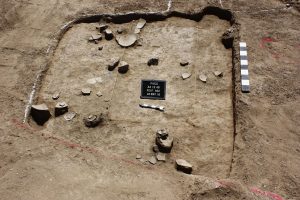Remains of dwellings that indicate existence of villages from different time periods were discovered in Tucson, Arizona, United States. The older is roughly dated to 500-700 AD, the younger to 1100-1300 AD.

The excavation site is located at a construction site for a new animal care facility near the Prima Animal Care Center at the corner of North Silverbell Road and West Sweetwater Drive. The archaeologists discovered what they believe to be two Hohokam villages established during different time periods, separated by five centuries.

The first village is said to have existed during the Tortolita phase of Hohokam presence in the Tucson basin, dating from roughly 500 A.D. to 700 AD. The village was abandoned, possibly due to environmental challenges and social unrest. Later, between 1100-1300 AD the possible descendants of the original inhabitants returned and re-established the second village.

Both settlements were likely built in rings around a central plaza. The excavations revealed numerous pieces of pottery, a number of stone tools and arrowheads, and jewellery made out of shells. Moreover a number of over 40 “mortuary features” were also found. They did not involved any human remains or objects in the funeral rituals. They were extracted and forwarded for further analysis, which may reveal new facts about the site and its inhabitants.
(after Tuscon.com)